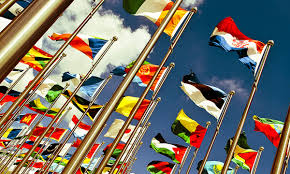This week’s tools focus on international avenues for your activist efforts. Although it’s important to look “in our own backyards” by standing up for marginalized groups and injustices in our local communities, it doesn’t negate the ability of activists to also contribute to international campaigns.
Often, my additions to the Activist Toolkit focus on general themes and strategies you can use in your efforts to celebrate specific days of action, launch a particular campaign, or accomplish a certain activity as an activist. This week, I’m eschewing general, apply-this-to-anything tools, and taking you straight to the source of some super interesting international campaigns.
Activists around the globe, campaigns from Afghanistan to Peru, and solidarity movements for all the places in between, this week’s theme is international activism. These resources are all about supporting our activist brothers and sisters in other nations, and standing up for injustices outside our borders.
If you’re a little wary about applying your time and talents in international applications, start with a few quick and simple ways to extend your work beyond national borders.
You’d be hard pressed to find someone who’s not following the Syrian crisis — and I expect that’s especially true within activist communities. The devastation is monumental, both inside Syrian borders and extending to surrounding countries dealing with an onslaught of refugees.
Check out this petition to push for peaceful negotiation to find a solution for Syria.
To address even longer-standing conflicts, this week the Toolkit is also home to a petition on Latin American mining projects. Sign this petition to stop illegal gold mining in the Amazon rainforests of Peru.
Guatemala is another Latin American country dealing with serious mining abuses. There are innumerable communities that have been driven out of their homeland or severely affected in other ways by Canadian mining projects. This week the Toolkit highlights a cool group working to support and empower Guatemalan activists (not just on mining issues). You can find the tool for the Network In Solidarity with People of Guatemala here.
To return to the Middle East, another tool this week is focused on women’s rights in Afghanistan. It’s a hot button issue, that’s for sure, and this guide prompts an important discussion about balancing international activism with cultural sensitivity. Nonetheless, it’s a stellar resource for raising awareness of the issues facing Afghan women, particularly as Western troops continue to pull out of the country and the mainstream media turns its attention elsewhere.
One of last week’s tools focuses on the avenues to submit complaints about International Financial Institutions. This week, we have a great toolkit designed specifically for the World Bank Group. It’s a guide for activists looking to help reduce the disparity or inconsistencies between the World Bank’s promised social programs and reality.
There’s no doubt about the fact that international activism — whether it’s observation of international bodies or a commitment to bringing peace to conflict zones — sometimes requires a little extra creativity and flexibility. If your creative juices aren’t flowing, try looking for inspiration on Actipedia. It’s a database of unique activist efforts and artistic applications in common campaigns.
Another way to connect with citizens and fellow activists is through the power of technology. In this case, you can harness creative energy and utilize modern software at the same time, by creating fun maps and/or location tools to visually enhance your work. Check out this guide to “Maptivism” and software tools to incorporate maps into your activist work.
Here’s an idea for an eager map-maker and Twitter lover. Projects in the past have tracked the use of a particular word or phrase on social media. It would be a real asset to the “Spread the Word to End the Word” campaign to map the occurrence and locations of those using the word “retarded” on social media. Check out this tool, highlighting the fabulous campaign to banish this word from the modern vernacular once and for all.
And the final tool this week is a fitting way to wrap up the above efforts. A new blog premiered in late 2013, called “Let’s Talk: At the Heart of Movement Building.” It’s a fabulous resource for activists around the globe to read about new campaigns, check up on others’ efforts, and most importantly, to discuss some of the prevalent but oft-ignored issues in the activist scene. My favourite posts are those that deal with some of these tough subjects — things like burnout or balancing kids and work. It’s an awesome way to get involved with discussion among your fellow activists.
What are your thoughts on international activism?
Any tips or tricks for collaborating with groups across geographic and cultural fault lines?
Is it more important to dedicate our activist energy to causes at home in our communities?




